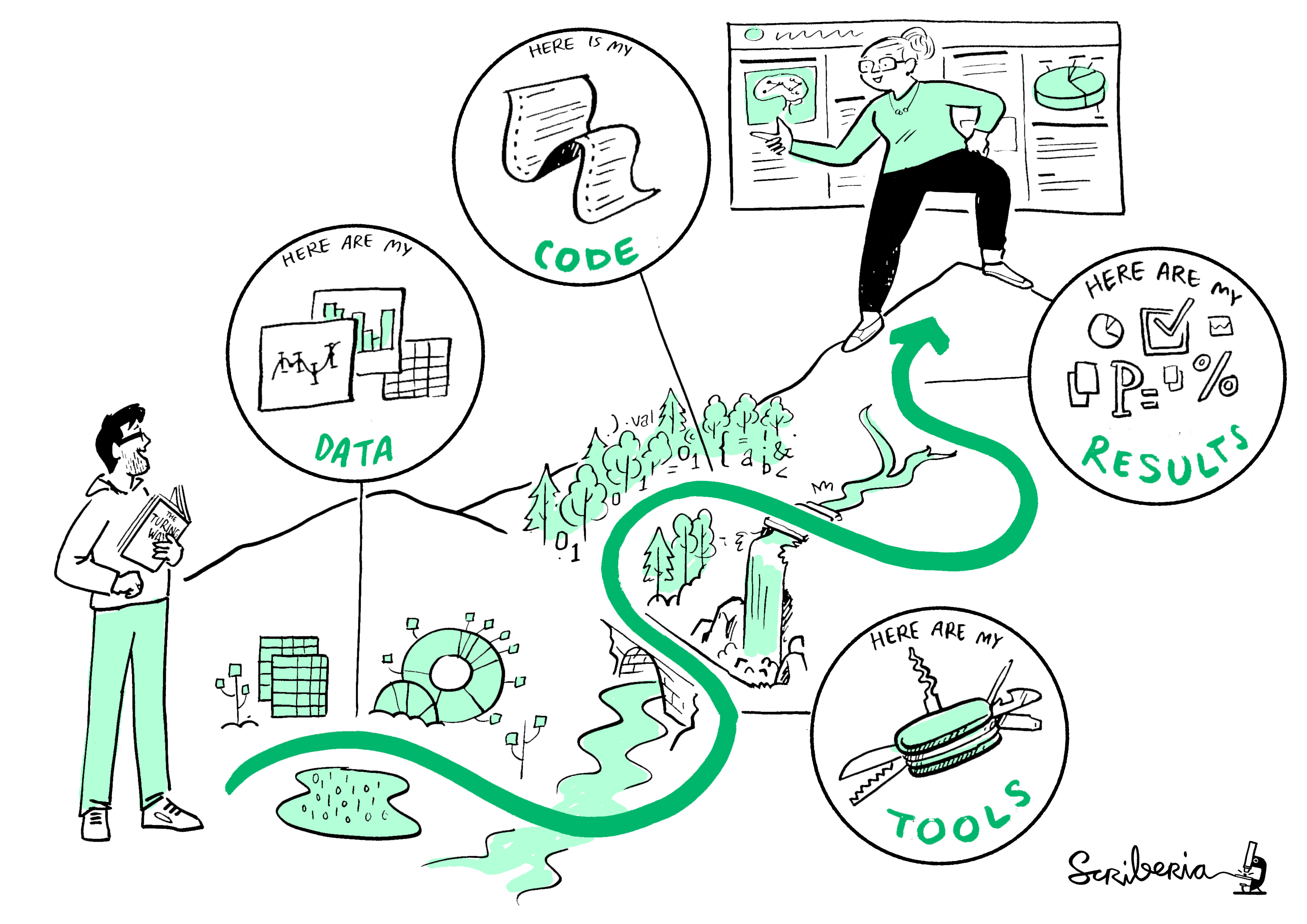Guide for Reproducible Research¶
This guide covers topics related to skills, tools and best practices for research reproducibility.
The Turing Way defines reproducibility in data research as data and code being available to fully rerun the analysis.
There are several definitions of reproducibility in use, and we discuss these in more detail in the Definitions of Reproducibility section of this chapter. While it it absolutely fine for us each to use different words, it will be useful for you to know how The Turing Way defines reproducibility to avoid misunderstandings when reading the rest of the handbook.
|
|---|
The Turing Way project illustration by Scriberia. Zenodo. http://doi.org/10.5281/zenodo.3332807 |
The Turing Way started by defining reproducibility in the context of this handbook, lay out its importance for science and scientists, and provide an overview of the common concepts, tools and resources. The first few chapters were on version control, testing, and reproducible computational environments. Since the start of this project in 2019, many additional chapters have been written, edited, reviewed, read and promoted by over 100 contributors.
We welcome your contributions to improve these chapters and to add other important concepts in reproducibility and how to empower researchers to work reproducibly from the start. Check out our contributing guidelines to get involved.

